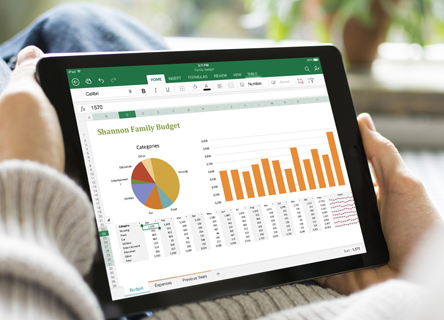There has been a significant transformation happening in the aviation industry with economies getting connected with each other in a significant way . Maturing relations or diplomacy between nations have paved the way for better Track 1 & Track 2 engagement that have strengthened business/trade relations, FDIs and tourism.
This is a good sign nonetheless, considering that it has the potential to uplift the growth dynamics and build better connectivity not just between nations but even for industrial expansion that are happening indigenously within the country.
But such developments would demand better technological adoption in the aviation sector, because the volume of domestic and international passengers for business & leisure would rise exponentially.
To cater to this phenomenon where airports would compete for limited resources, cutting edge infrastructure and new technologies can be a game changer for passengers who are looking for safety and hassle-free travel experience. That’s where the need for digital transformation arises to deliver futuristic airport infrastructure to growing nations for ensuring their business continuity on a mass scale. AI & Big Data has emerged as the most amenable gateway for setting up a frugal IT infrastructure that can reduce cost of operations and better experiences from safety, security and cost-effectiveness standpoint.
Why Airports Need Airport Operations Analytics?
As airports compete for marginal resources because of cut-throat competition, they need to deliver unprecedented customer experience to passengers by incurring minimal cost of customer acquisition. To Herald Into the concept of Airport 4.0 As Per Digital Transformation Trends To Support Growth & Expansion Airports need:
• Location Tracking: Identifying key destinations based on insights through predictive analysis that would suggest them where to dedicate their resource
• Preferences of Customers: Data tracking of customers can help airports assess the food preferences of the passengers and accordingly they can set up the outlets at the airports for profit maximization.
• Event Organization: As airports embrace digital transformation, collection of data will allow them to use the information for further scaling their business. The airports can sell travelers profiles to retailers and airlines to give them better flying opportunities for any upcoming events. In this way, they might even act as a nexus between passengers, retailers and airlines.
• Weather Analysis: Airport predictive analytics systems can help airports understand the weather pattern and prepare the airports for passenger traffic. Such insights can help them bring better experience to passengers even during averse weather conditions.
Challenges Faced By Airports and Ways By Which Digital Transformation Can Help Them
Airports need to adapt to the new concept of Airport 4.0 for sustainability where they will embrace the digital transformation for streamlining process automation using mobile CRM technology, cloud, blockchain based solutions, Big Data, Internet of Things, and Robotics. These smart upgrades could solve key bottlenecks by;
• Exceeding Expectations
Providing agile technology solutions doesn’t mean just digitally connecting with the passengers but adding value to their experience via technology. Most airports have special custom applications built for passengers, but is that enough to surpass the expected standards passengers anticipate, or rather seek. Airports must look into an indoor navigation system that would further add value to the experience of customers at the airport.
The need for a real-time peer-to-peer airport business analytics interaction system using technology can help them have a better experience. For example, if passengers are given real-time push notifications that inform them about the change in the boarding gates. They would not be bothered about looking at large monitors and displays to get information, Using their mobile phones, everything will be available in a flash. A good indoor navigation system inside the airport can reduce considerable stress of the passengers.
• Queue Management
Queue management for baggage claim and airport parking can increase the scope for better revenues at the airport. It might be a surprising figure but almost 40.4% of the revenues collected at the airports are from non-aeronautical streams. In this contribution, retail plays a key role. So, what should be the best approach to deal with the problem where passengers do not have to spend much time taking boarding tickets, or undergoing airport duty free or duty with stuff assessment process? Staffing ain’t a solution as it will increase cost of operations and minimize profits, in case, if you are thinking about that.
Therefore, airports can use indoor analytics. These systems can help the airport management system to take necessary steps whenever they see overcrowding or queue formation at any place. They can set-up airport video analytics to track passenger behavior at specific retail points and prepare themselves to implement strategies that can help them upsales at such points. Such an approach will help identify bottlenecks at the airport and resolve them efficiently.
• Safety & Security
Incidences like 9/11, 2009 suicide air raid at Colombo airport or the horrendous Brussels bombings in 2016 raise serious concerns for air travelers. With a tremendous spike in the events of terrorism, embracing technology transformation in the form of Indoor Ground Positioning & Asset Tracking will significantly improve the overall security standards at the airport. By deploying airport video analytics, any possible threats to safety and security can be neutralized. The airport authority will have access to criminal database that they can feed in their system to track each and every individual at the airport via CCTV surveillance programs.
The safety standards will be further fortified via indoor navigational system, where incidents will be tracked and monitored via digital maps within the airport vicinity and the administrative team will have full access to all the surrounding areas to avail necessary help and support whenever need arises. Such monitoring system will ensure security to passengers from every standpoint, whether it is man-made, technical or infrastructural.
How Airport Operational Analytics Will Help in Understanding Airport KPIs for Better Business Operations?
Airport Operations Analytics will be a game changer to uplift passenger experience at the airport. Deploying analytics can help in understanding passenger’s pattern of purchase, buying habits, preferences and their frequency at the airport. By analyzing the trends and patterns from a 360 degree angle, specific demands of passengers, traffic segmentation and even predicting the volume and traffic at the airport will be possible for a better passenger experience. A highly agile and scalable airport operational solution powered by AI and Big Data can make complex process at the airports simplified for better business operations.
A win-win situation can be created for passengers and airlines when they get the following advantages;
Before Check-In
Adequate flight Information like;
• Departure Date & Time
• Details of Departure of All flights From and To destination
• Passenger e-Ticket Available with QR Scanners
• Information of Passengers Class
• Arrival Flights Airline and its Origins
• Group of Passengers
In Between Check-in & Security
• Time Stamps for Check-in
• Check-In Channels
• Check-In Sequence numbers
• Baggage Numbers and Seat Numbers on QR Scanner
In Between Security & Boarding
• Security Time-stamp
• Security Lanes Information & Their Access Availability
• Late Passenger Auto Detection and Notification System
• Shop Ids for Retail Purchases
• Flight Number
• Purchase Stamps
• Airlines Used
After Boarding
• Boarding Time Stamps
• Missed Passengers Information
?What Will be The Result of Understanding the KPIs for the Airports?
? Optimization of Passenger Experience
Airports can run incentivization programs for early check-ins and proper security screening which will help optimize traffic and passenger flow at the airport.
? Maximizing Dwelling Time
When passengers have connecting flights, or they are bound to stay at the airports for longer hours, incentive programs at retail outlets motivates them to buy. Airport business analytics provide actionable data to help stimulate the buying habits of the passenger by setting up stores in crowded areas of the airport.
? Passenger Clustering
Real-time data can easily mitigate traffic surges from clustering of domestic and international passengers to provide better ambiance and convenience to passengers.
? Retail Sales Analysis for Flights
Retail sales of passengers can be mined through their electronic time stamped boarding passes that they can use to avail specific discounts and offers. In this way, a proper tracking mechanism can be placed to understand customer behavior and provide them with personalized benefits for setting up loyalty programs and other strategies to draw more passengers and further amplify revenues.
? Setting Retails to Necessary Airport Parking Areas or Flight Allocation Point
Consumer/passenger data available at the airport can help grab actionable insights to influence the decision making. This could begin with identifying the flight patterns, customer/passenger preferences, and areas witnessing significant footfall. Such insights will help set-up retail stores at key crowd points for maximum sales and profits.
What Airport Analytics Can Achieve For The Future of Airport 4.0?
Airport analytics will be strategic as well as clinical to help airports usher in the era of technological upgrades. Big Data has already transformed many sectors via predictive analysis, NLP and using airport analytics for simplifying operations; major airports can harness their potential by ;
• Strategically gaining situational awareness, uplifting their revenues and profits
• Understanding fuel requirements
• Helping in reducing the taxi time and fuel waste
• Bettering operational efficiency with arrivals and departures getting further organized via technology
• Mitigating overcrowding and loss of opportunities of revenue generation
Conclusion
Future of the Air Travel or FOAT initiative is a revolutionary approach that most of the airports have started to adopt for mitigating the losses and scaling up opportunities. Every year majority of the airports are losing revenues because of inadequate flight management program, flaw in the personal identification system and data screening.
To further aggravate the standards, absence of proper limit holding patterns and extended taxi times cost 65% revenue generation that could happen via relaxation, eating and shopping that passengers do at the airport.




